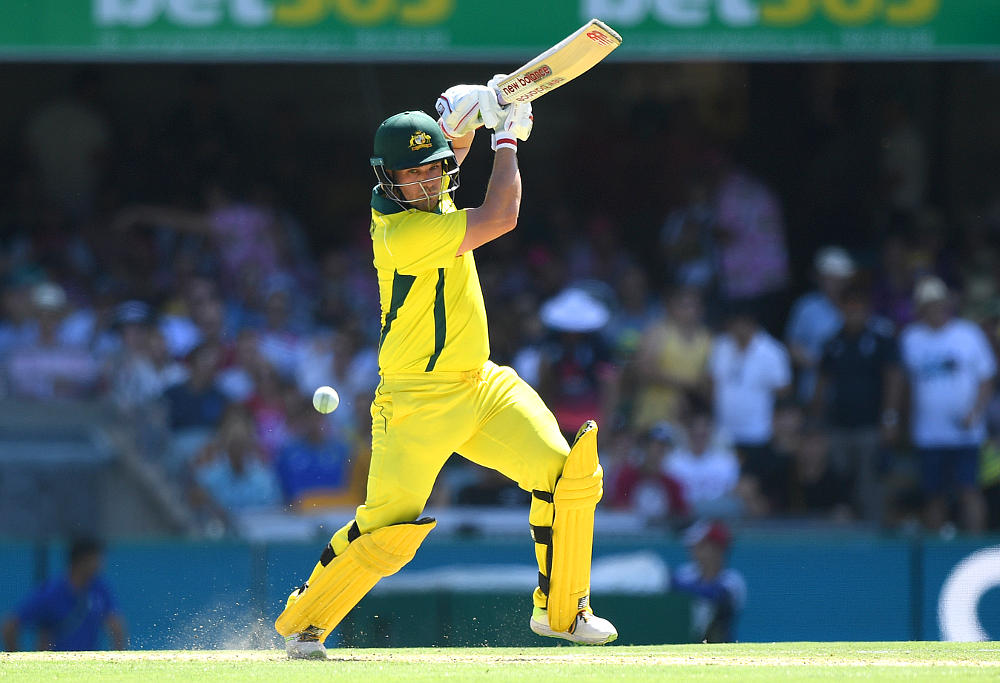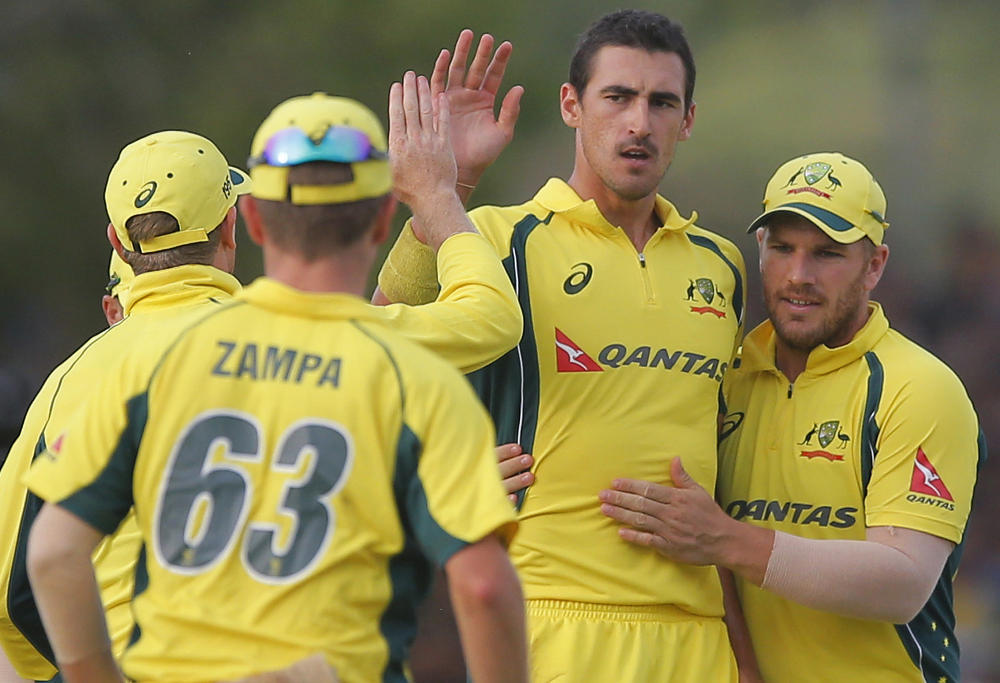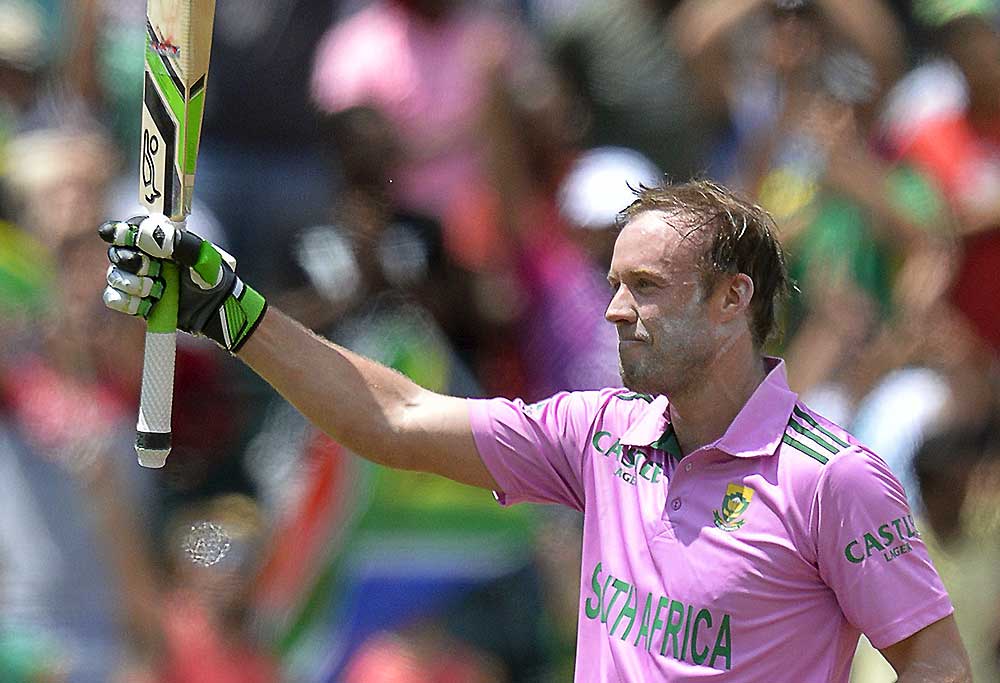After a disappointing 12 months of One Day cricket, culminating in an awful home series loss to England, Australia is in need of a revamp.
Captain Steve Smith and Chairman of Selectors Trevor Hohns publicly conceded as much, with armchair critics flooding social media with opinions about who should be picked, who should be dropped and who should be moved around in the batting order.
It’s impossible to please everyone with selections, no matter how much analysis goes into the process. When a team is winning regularly, the job certainly gets easier; unfortunately, Australia isn’t (a couple of consolation wins notwithstanding).
It’s a situation to which most Australian players and fans are unaccustomed, at least in this format of the game.
The issue is not just one of personnel, but also of the roles players should fill within the side. In reality, it’s almost impossible to pick your best team when you haven’t even settled on the best team structure. To attempt to do so is to put the cart before the horse.
So, what’s the ideal template for a modern-day ODI team? It’s not an easy question to answer because it depends somewhat on where a particular side’s strengths lie, but we can still look to other teams around the world for cues.
Making the most of the powerplay
Arguably the most obvious change over the last few years is the manner in which top order batsmen approach the powerplay. Australia used to lead the way when it came to fast starts in ODIs, but T20 skills have taken this concept a step further.
Run rates of five or six an over – considered good pace until relatively recently – is now the bare minimum on all but the trickiest pitches.

(AAP Image/Dave Hunt)
Subject to conditions, teams aim to have well in excess of 60 runs after ten overs. As good as Aaron Finch and David Warner are, it’s probably fair to say that Australia is lagging a little behind the pack in this regard.
Most sides have at least one player, often two, in their top three whose priority is to throw everything at the new ball.
India has Rohit Sharma and Shikhar Dhawan; England has Jason Roy, Jonny Bairstow and Alex Hales; New Zealand has Martin Guptill and Colin Munro; South Africa has Quinton de Kock. Some of these batsmen – particularly Sharma and Guptill – are talented enough to play different roles, but for the sake of a label let’s call them ‘dashers’.
These players are generally accompanied in the top three by an elite player capable of attacking from the first ball (not necessarily to the level of a dasher) who can also play an anchor role – think Virat Kohli, Hashim Amla, Joe Root, Babar Azam and Kane Williamson. At the risk of sounding cheesy, we’ll dub this player the ‘gun’.
Versatility in the middle
Modern middle order batsmen bring flexibility. For a long time, batting in the middle overs was all about accumulating and building (or, if early wickets fell, rebuilding) the innings. This is still the case to a point, but getting bogged down and undoing a fast start is considered a cardinal sin in ODI cricket.
For context, England leads the pack during the middle overs since the World Cup, averaging better than a run-a-ball.
The best batsmen playing this role still have the skills to pace an innings and stave off collapse, which allows the dashers at the top to play their shots with impunity.
Most importantly, if their team gets off to a good start, the likes of AB de Villiers, Angelo Mathews, Eoin Morgan and MS Dhoni are able to keep the scoreboard ticking over – whether through persistent strike rotation, regular boundaries or a combination of the two. These men are their team’s ‘controllers’.
Dashing lower order
Teams generally look to fill positions six and seven with decent firepower. In an ideal innings, these players are coming to the crease after the 35th over, in which case there is precious little time for building an innings.
At face value, this role hasn’t changed much since the turn of the century. What has changed is the skillset required to perform the role. Death bowlers have developed a large variety of deliveries to thwart batsmen’s attempts to find the boundary.
Being a powerful striker is no longer enough on its own. Batting at the end of an innings now requires an ability to use the crease – on both planes of movement – and a broad array of strokes, orthodox and otherwise, to confound bowlers.
Jos Buttler, Sarfraz Ahmed, Colin de Grandhomme and Hardik Pandya excel in this role. We’ll refer to them as ‘finishers’. Dhoni and David Miller would both sit comfortably on that list, although more recently they have batted slightly higher in the order for their respective countries.
Among the top seven batsmen, virtually all teams have at least one genuine all-rounder and one or more handy part-time bowlers. It goes without saying that they also need a decent wicketkeeper. Exactly where these players appear from 1-7 doesn’t really matter, as their batting ability determines when they arrive at the crease.
The bowling unit
Below the batsmen, four frontline bowlers are still a standard requirement. Australia made a huge error by playing only three at the Gabba against England, evidenced by part-time tweakers Travis Head and Aaron Finch both bowling inside the first 13 overs.
Of the frontline bowlers, ideally at least one will boast genuine batting ability, with the power to clear the boundary. This summer, Chris Woakes has highlighted just how valuable such a player is.
The role of new-ball bowlers hasn’t changed significantly, with both seeking to use any available movement or bounce to take early wickets and at least one of them capable of maintaining disciplined line and length to stifle dashers.

(AP Photo/Eranga Jayawardena)
The most valuable bowling pairs – including Trent Boult and Tim Southee, Bhuvneshwar Kumar and Jasprit Bumrah, and Mohammad Amir and Junaid Khan – are also effective at multiple stages of an innings.
Of the two change bowlers, at least one is a spinner, whether their strength is economy (Ravindra Jadeja, Mitchell Santner) or taking wickets (Imran Tahir, Adil Rashid). The role of frontline spinners in limited overs cricket has become vital, to the point that subcontinental teams sometimes field two specialists even if their all-rounder is a spinner.
Within the bowling group, including the all-rounder, a minimum of two bowlers must have the skill to execute team plans at the death. This is another art that hasn’t necessarily changed in concept but has evolved in execution.
The best current exponents of death bowling, such as Bumrah, Hasan Ali and Liam Plunkett, have an ever-expanding repertoire of deliveries used to out-fox the batsman. Yorkers alone are no longer enough because elite finishers can use their crease to change the line and length of the ball, as already mentioned.
A summary of the current best ODI sides gives us the following template:
Batting order:
1. Dasher
2. Dasher/Gun
3. Dasher/Gun
4. Controller
5. Controller
6. Finisher
7. Finisher
8. Bowler (with batting ability)
9. Bowler
10. Bowler
11. Bowler
Additional attributes:
– Wicketkeeper (top 7)
– One or two all-rounders (top 7)
– One or two part-time bowlers (top 7)
– Two frontline opening bowlers
– One or two frontline spinners
– Two or three death bowlers
Of course, this template is an approximation. Where it isn’t reflected in a top team’s line-up, often it’s because that side relies on one or two exceptionally talented batsmen to play multiple roles.
For instance, South Africa usually only plays one dasher (de Kock) at the top and skipper Faf du Plessis, more of a controller, sends himself in at three They can afford to do this because they have the luxury of the freakish de Villiers in the middle order – one of the few men on the planet who can play all three of these batting roles at an elite level – and behind him the experienced David Miller, who now straddles the divide between controller and finisher.

(AFP PHOTO / STRINGER)
India has been known to play five frontline bowlers, banking on the batting talents of Sharma, Kohli and Dhoni, although usually at least two of their bowlers (such as Ravi Ashwin and Jadeja) are accomplished batsmen in their own right.
In the absence of Ben Stokes, England has played three dashers at the top in the current series because Root, who has dropped one position to four can be classed as both a gun and a controller.
Fixing the Australian team
If we accept this template as a decent starting point, then we can identify some clear problems with Australia’s ODI approach over the last 12 months. Firstly, Steve Smith is not a dasher or a gun at ODI level. He is better suited to the role of controller, which means he has been batting at least one spot too high.
This particular issue has recently been acknowledged and he’s now batting at four. To complete the move, the team needs to insert another dasher above him but Cameron White is probably not the best option. Marcus Stoinis played the role well last night, although he’s been valuable as a finisher to this point in his career.
Secondly, Travis Head is not a controller. His limited overs role for South Australia and the Adelaide Strikers is that of a dasher (or arguably a gun) at the top of the order. Bringing him in at four means asking him to perform a role that is not his strength in this form of the game. The contrast in his approach as an opener in Adelaide was clear.
Thirdly, although Glen Maxwell has developed a well-rounded game as a middle-order batsman in first-class cricket, his best role is not that of a controller. Ideally, he plays as a dasher or a finisher. In ODIs over the past 18 months, he often hasn’t batted in a position corresponding to either of those roles.
Fourthly, incumbent ODI ‘keeper Tim Paine is not a finisher. He’s an elegant stroke-maker who could potentially play a role as a controller or even a dasher (the latter being his role with the Hobart Hurricanes) but batting him at seven hampers Australia’s firepower at the death. He simply doesn’t have the strength to force regular boundaries from off-pace deliveries against the old ball in the way that Buttler and Stoinis can.

(AAP Image/SNPA, Ross Setford)
Finally, the role of the spinner is consistently underestimated. The concept of playing two spinners doesn’t really seem to have crossed the minds of the Australian selectors, despite Mitchell Marsh and Stoinis offering handy seam options. Incumbent Adam Zampa has been periodically omitted to make way for another paceman.
The logical way to complete this analysis is to put forward a team that does fit the template. While this side is somewhat experimental, Australia should use the next six to 12 months to examine other options:
1. Aaron Finch (gun/captain)
2. Alex Carey (dasher/keeper)
3. Travis Head (dasher)
4. Mitch Marsh (controller/all-rounder)
5. David Warner (controller/vice-captain)
6. Marcus Stoinis (finisher/all-rounder/death bowler)
7. Glenn Maxwell (finisher/part-timer)
8. Ashton Agar (spinner)
9. Mitchell Starc (new ball/death bowler)
10. Nathan Lyon OR Pat Cummins (change bowler)
11. Josh Hazlewood (new ball bowler)
The gun could really only have been Finch or Warner. Finch got the nod mainly because Warner is needed elsewhere and hasn’t been as effective in the powerplay. As for the dashers, this is one area where Australia has a surplus of options. The likes of Chris Lynn, D’Arcy Short, Nic Maddinson, Usman Khawaja and Glenn Maxwell could easily slot in here, with Carey potentially dropping down to seven as a capable finisher.
Picking Mitch Marsh over Steve Smith is a decision based on current form. A tired-looking Smith is struggling to maintain a decent scoring rate through the middle overs and lacks Marsh’s firepower at the death.
Marsh also has the potential to develop into a gun and bat at three (provided that he stops smacking balls back to bowlers at a catchable height) so he deserves to be persevered with, even if his strike rotation is a work in progress.
Smith is clearly talented enough to fight his way back into the side at some point but his form slump presents an opportunity for Marsh. Peter Handscomb is another potential option at four or five.
Interestingly, David Warner doesn’t really qualify as a dasher by modern ODI standards. In his last nine ODI innings in which he has scored between 20 and 100 – stretching back to October 2016 – his strike rate has been below run-a-ball on every single occasion.
This suggests that Warner is better classed as a gun or controller, using his broad range of strokes and hard running between the wickets to build or retain momentum. In reality, he could probably play either role but Australia’s current batting weakness is its middle order so it makes sense to shift its best batsman there.
The call between Agar and Lyon as the first spinner was tight. Agar got the nod because of his batting ability as a finisher. However, Lyon would be an ideal second spinner should Australia decide to venture into uncharted territory. He edges out Adam Zampa on form.
If Agar is the lone spinner then Pat Cummins narrowly edges out West Australian trio Andrew Tye, Jhye Richardson and Jason Behrendorff.
Australia is a little light-on for death bowling options (hence the use of Stoinis in this role). Andrew Tye certainly strengthens this department but he doesn’t quite offer as much as others earlier in the innings.
So, there you have it – an imperfect template for an inexact science. Feel free to put together your own template or ODI selections in the comments section below.

































































































